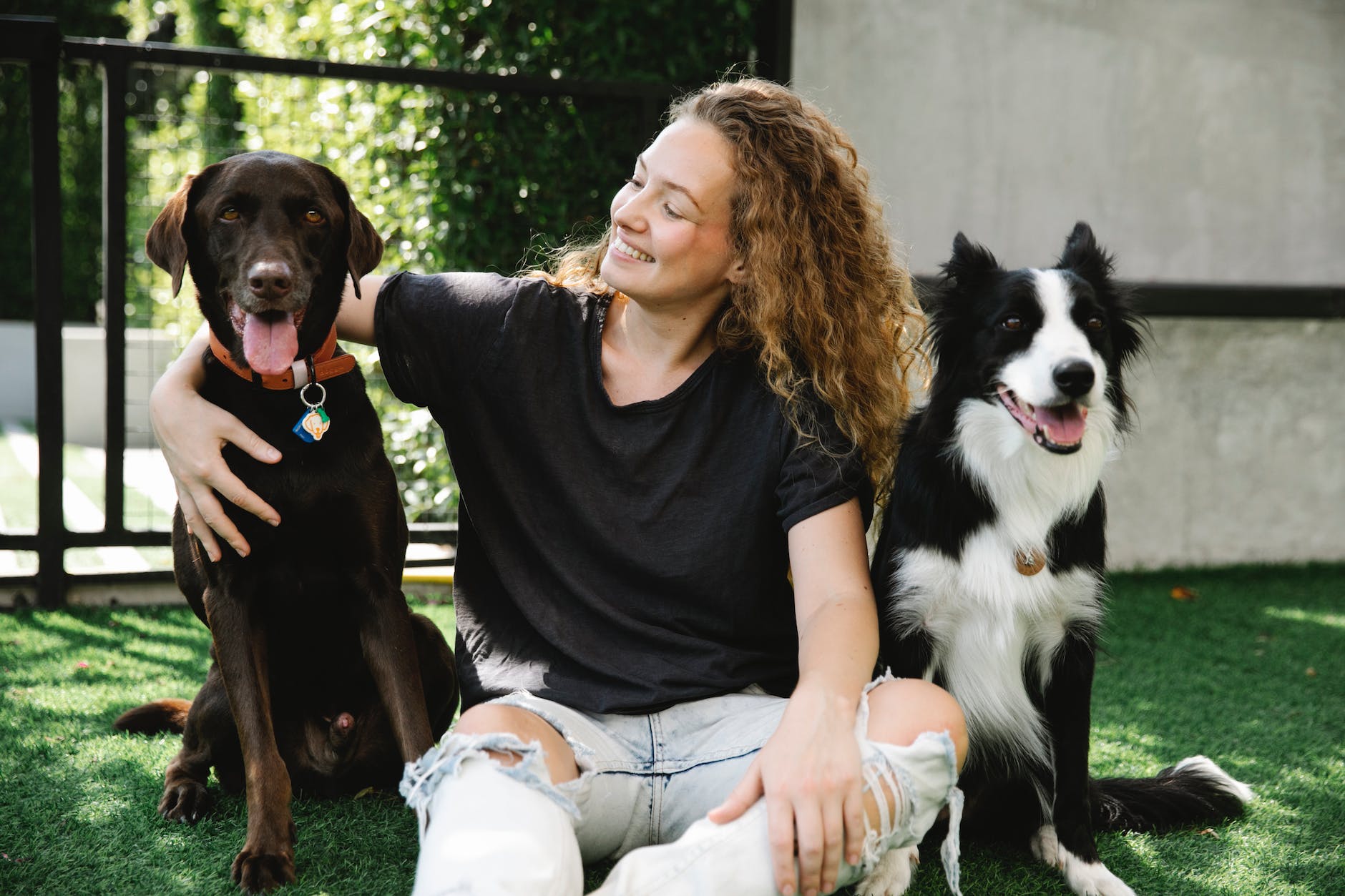
How to Train Your Dog with an E Collar
Whether you’ve owned dogs for years or just started, training them is important for their health and yours. E collars can help with training, so you’re at the proper spot. This post will teach you how to train your dog with an E collar for a happy and successful experience. Let’s begin and learn how to teach your dog to use an E collar.
Selecting an E Collar
To choose the proper e-collar for your dog, you must understand the different varieties. Choose from remote training, bark, and confinement system collars. Each style has a distinct function, so choose one that fits your training goals and dog’s needs.
You should also consider your dog’s size and temperament while choosing an e-collar. The collar may need to be lighter and smaller for smaller dogs and heavier for larger canines. Similar to how sensitive dogs may benefit from collars with lower stimulation levels, obstinate dogs may need collars with more stimulation options.
Remember to verify e-collar quality and durability before buying. Look for durable collars constructed of high-quality materials. Since dogs train in damp or muddy conditions, make sure the collar is waterproof or water-resistant.
Understanding E-Collar Function
Understanding an e-collar’s components and operation is crucial to training your dog with one. E collars have transmitters, receiver collars, and stimulation intensities. Dogs wear receiver collars that receive stimulation signals from the transmitter, which you operate with a portable device.
Electric stimulation is an e-collar’s main purpose. Controlled stimulation helps you communicate with your dog. It may encourage good conduct and discourage bad behavior when applied properly. Electric stimulation doesn’t hurt your dog; it’s meant to catch their attention and redirect their concentration.
E collars include various functions and adjustments besides electric stimulation. Audible tones, vibrations, and stimulus intensities are examples. These settings are customizable for your dog’s training and sensitivity.
Starting E-Collar Training and How to Train Your Dog with an E Collar.

Before starting e-collar training, introduce the collar to your dog positively. Let your dog smell and become used to the collar. Start fitting the collar slowly, snug but not too tight. You want your dog to like the collar, so don’t rush.
After your dog becomes used to the collar, set up the e-collar transmitter. Master the transmitter’s buttons and settings to modify stimulation levels and other parameters. Read the instructions carefully for safe and successful training.
E-Collar Positive Association
A good setting during e-collar training helps establish trust and reduce dog anxiety. To encourage your dog to connect the collar with happy events, give it food or praise. This will teach them that wearing the collar means fun training sessions, not dread.
Trust is essential in all training, including e-collar training. Reward desired canine actions with positive reinforcement to progressively lessen stimuli. To bond with your pet, training sessions should include praise, encouragement, and engaging play.
Basic E Collar Commands
After your dog likes the e-collar, give him simple instructions. An e-collar can help your dog obey these orders. Let’s learn some basic commands and e-collar training for your dog.
Teaching ‘Sit’ is usually the first step. Start by saying “sit” and softly stimulating. Give your dog a reward or praise when they sit down. Keep doing this until your dog gets the order.
Your dog’s safety depends on learning the ‘Stay’ command. Start by saying “stay” and gently stimulating to stop forward movement. If your dog stays there for the specified time, release the stimulus and praise or treat them. Gradually increase distance and continue to improve
comprehension.
Your dog’s recall and off-leash safety depend on teaching the ‘Come’ command. Start by saying “come” and softly stimulating. Release the stimulus and praise or treat your dog when they approach. Always practice this command in controlled circumstances before moving on to distractions.
Correct Training Methods
E-collar training requires consistency and repetition. Always use the same instructions and gestures while teaching your dog to assist them in comprehending. Be patient and persistent in training to instill habits.
Another key to e-collar training is gradually adding distractions. Training should begin in a peaceful, controlled area before adding distractions like other dogs or humans. Your dog will learn to focus and follow directions despite distractions with gradual exposure. Allow your dog time to acclimate to new situations and distractions.
Avoid using the e-collar for punishment. The e-collar should never induce fear or discomfort, since this might stress your dog and undermine your trusting bond. Instead, use positive reinforcement, praise appropriate behaviors, and gently correct undesired habits.
Using the E Collar to Correct Behavior
E collars may target individual behavior concerns as well as fundamental command teaching. E-collars help reduce excessive barking. When your dog barks excessively, utilize the collar’s stimulation or vibration to refocus their attention. Use positive reinforcement to praise your calm dog.
Another use of the e-collar is to control aggressiveness or dominance. Stimulation from the collar can dissuade aggression. Aggression issues demand careful attention and knowledge, therefore it’s best to see a dog trainer or behaviorist.
E collars can help correct leaping, digging, and chasing. You can refocus your dog’s concentration and discourage these behaviors with the right stimulus amount and timing. Combining this punishment with a positive reward for desired actions can teach your dog suitable conduct.
Avoiding Common E-Collar Training Mistakes
Avoid frequent blunders to succeed in e-collar training. Avoid using the collar as punishment. Instead of hurting your dog, use the e-collar to communicate positive behavior. Misusing the collar as punishment might hurt training.
Avoid relying too much on the e-collar. E-collars are great training tools, but they should not replace positive reinforcement and consistent orders. Use the e-collar to augment your training, not replace it.
Missing training steps is another typical error. It’s crucial to follow a disciplined training plan and improve gradually. Skipping crucial stages might confuse and frustrate you and your dog. Build a strong foundation with the basics before adding more complex commands or actions.

Monitor and Adjust Stimulus
To educate your dog effectively while protecting their comfort, you must determine their stimulation level. See how your dog reacts to the lowest stimulus level. Extreme scratching, whimpering, or avoidance may indicate distress. Reduce stimulation if distress occurs.
Remember that every dog is different, so what works for one may not work for another. The stimulation degree may depend on your dog’s sensitivity and reaction. Monitor your dog’s growth and behavior during training and adapt as needed to reach their full potential.
Gradual E Collar Off-Leash Training
After your dog has mastered on-leash training, use the e-collar to teach off-leash training. While preserving control and reliability, off-leash training gives your dog more freedom. Off-leash activities must be safe for them.
Practice off-leash recall in a supervised, distraction-free setting. Say “come” and administer low-level stimulation. Praise or treat your dog if they come to you. As your dog improves recall, introduce distractions and train in diverse environments.
Focus on your dog’s safety while off-leash training. How to Train Your Dog with an E-Collar, Avoid risky off-leash activities near busy highways or unfamiliar territory. Continue to test and reinforce your dog’s recall for a dependable off-leash experience.
Finally, teaching your dog with an e-collar can improve obedience, demeanor, and your relationship with him. Selecting the perfect e-collar, knowing its functionality, and using suitable training strategies will help you and your dog have a great training experience. Positive reinforcement, a positive collar connection, and your dog’s comfort and well-being throughout training are essential. You can train your dog and create trust and friendship through patience, consistency, and love.
